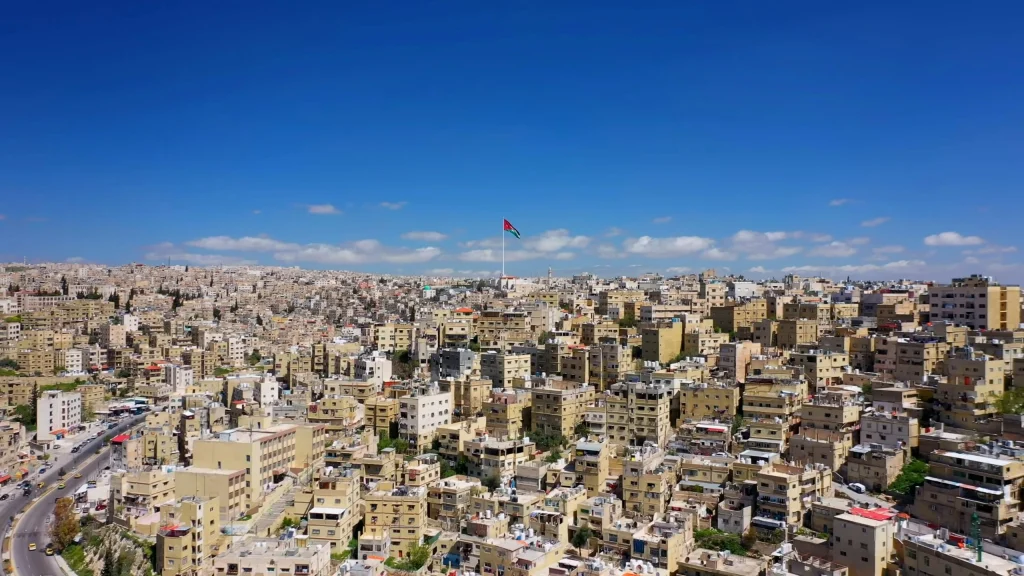CITY STRATEGY AND GOVERNANCE
Amman Resilience Strategy

Amman, Jordan’s capital, faces increasing climate risks, including heatwaves, flash floods, and droughts, driven by climate change. To address these vulnerabilities, the Greater Amman Municipality (GAM) utilizes vulnerability mapping across its 22 districts to assess climate hazards and prioritize localized adaptation projects. Aligning with Jordan’s commitment to the Paris Agreement, focusing on maintaining global temperatures below 1.5°C, Amman’s approach emphasizes strengthening urban resilience, safeguarding resources, engaging vulnerable groups, and improving adaptive policies.
Challenges addressed
- Rapid urbanization and population growth, strain aging infrastructure, increase resource demands, and exacerbate vulnerabilities to climate hazards like heatwaves, floods, and water scarcity.
- Poor urban planning, air pollution, and insufficient green spaces, aim to reduce environmental degradation, improve resource management, and build resilience against the impacts of climate change.
Main objectives
• Enhancing climate resilience: Strengthen the city’s capacity to adapt to climate-related hazards, including heatwaves, flash floods, droughts, and resource scarcity, by integrating sustainable infrastructure, nature-based solutions, and social infrastructure upgrades.
• Integrated urban planning: Address urban sprawl, inefficient land use, and zoning issues to create a resilient, green, and inclusive city while curbing the environmental degradation caused by rapid urbanization.
• Data-driven decision-making: Develop measurable, evidence-based climate and environmental indicators through the Urban Observatory to support effective planning, monitor progress, and reduce inequalities, especially for vulnerable groups.
External resources
Facts
Project type Urban climate resilience project
Partner City of Amman, Rockerfeller Foundation
Beneficiaries Amman’s Municipality
Dates December 2014 – May 2017
Website Amman Resilience Strategy
Project description
The Amman Resilience Strategy has paved the way for Amman’s progress toward a multisectoral, systematic, and actionable strategy to build a city more resilient to multiple shocks, including climate-related ones. Comprising five pillars, the strategy aligns five goals under the “an environmentally proactive city” pillar, addressing Amman’s climate change commitments endorsed during COP21 and C40 Cities actions, energy resources diversification, green buildings, water resources management, and municipal solid waste management. It encompasses 16 goals and 54 actions. Building on this strategy, Amman adopted its first Climate Action Plan (CAP) in 2019, envisioning ambitious targets until 2050 for reducing GHG emissions and building climate resilience through six sectoral pillars: renewable energy, water and wastewater, transport, buildings, solid waste management, and urban planning. The action plan has 21 goals and 51 actions.
Impact and results
• Implementation of a Bus Rapid Transit (BRT) system: Amman has developed a BRT system to improve public transportation efficiency and reduce traffic congestion, which is crucial for a growing city like Amman.
• Feasibility study for Amman Metro: To complement the BRT system, Amman has undertaken a feasibility study for the development of a metro system, aimed at providing a more sustainable, long-term solution for urban transport.
• Reinforcing legislation for the protection of the environment: As part of its climate resilience strategy, Amman has worked to reinforce environmental protection laws and improve regulations that govern issues like air pollution, waste management, and water conservation.
• Green Amman 2020: One of the cornerstone projects of Amman’s environmental strategy is Green Amman 2020, a program to increase the city’s green spaces.
• Promoting and facilitating licenses for home-based businesses: Recognizing the need to support economic resilience and provide livelihoods for residents.
Publications & main documents
RELATED CONTENT
Sorry, no posts matched your criteria.


